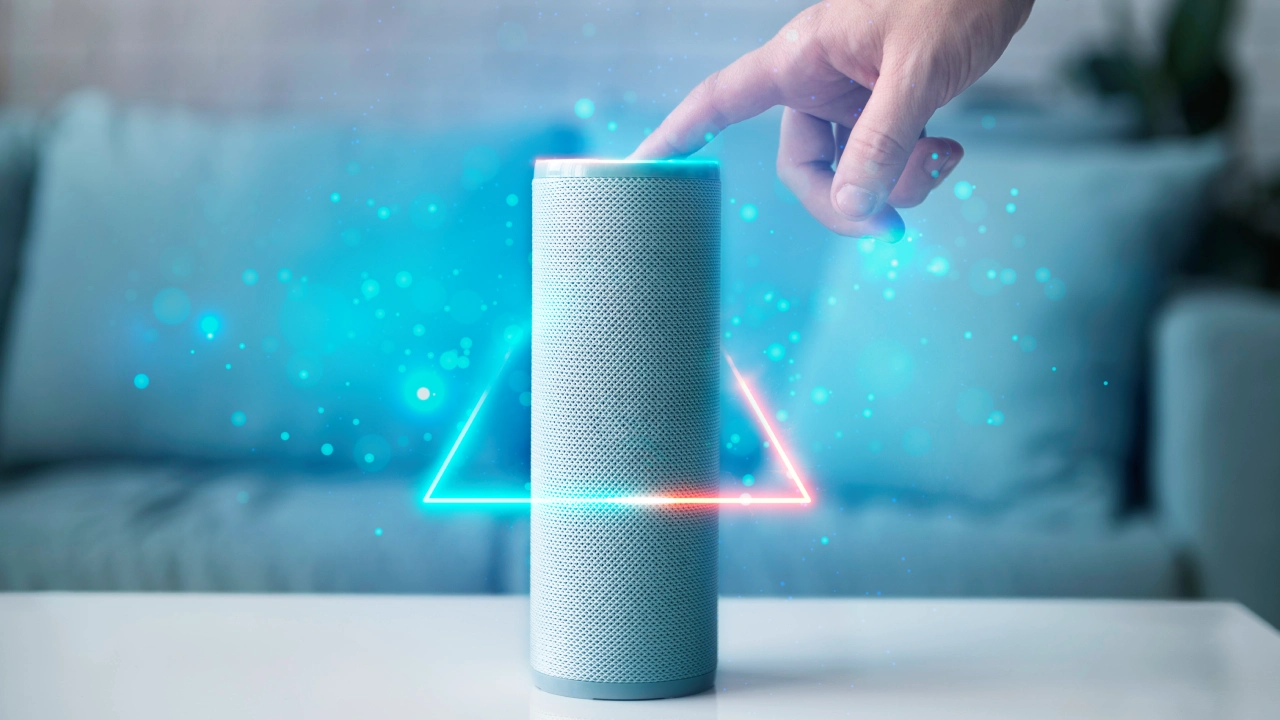By Sahil Rumba
Copyright techgenyz

Everyday utility: People are using voice technology in cars for navigation, in hospitals for hands-free documentation, and in workplaces for faster tasks.Accessibility boost: Seniors, disabled users, and non-native speakers use voice tools for scheduling, managing medications, and seamless translation.Customer service & beyond: Enterprises use voice AI to handle FAQs, while clinicians, technicians, and retail workers rely on it for hands-free efficiency.
If you grew up considering voice assistants as small personalities residing in kitchen speakers, 2025 seems like the moment that fiction finally started to act like reality. In the last couple of years, voice technology stopped being a fun, situational use item for setting timers and became a practical everyday interface across cars, hospitals, phones, banks, and workplaces.
That change is technical, and then humane: there are microphones everywhere: speech models are faster and more accurate, and designers are learning how to make voice interactions less irritating and actually helpful.
From timers to tutors: the new place’s voice lives
In the beginning, voice technology was all about smart speakers and phone assistants. But today, that foundational capability—converting speech to text, interpreting intent, and delivering helpful responses- is a mere subset of a much wider range of devices. Think cars, for example. Active and tousled automakers are past “play music” and moving towards fully digital conversational copilots, which not only coordinate navigation and recap messages but also even thread as the user drives down the road.
A recent redesign of an A-Class from Mercedes-Benz and Volkswagen is seriously tweaking car interiors to incorporate conversational assistants synced to cloud and local models, which are now part of many mainstream vehicle releases. Car “UX” now assumes voice will be a central and primary vehicle control interface.
Healthcare is one area where voice has become not-so-quietly essential. Clinicians use voice-enabled tools for clinical documentation, hands-free charting, and patient follow-ups, and hospitals with pilot programs for AI scribes have reported thousands of hours saved and alleviated clinician and nurse burnout.
For patients, voice is a gateway: seniors and people with disabilities can now manage medications, schedule appointments, or review test results with ease and reduce the need to deal with a screen or navigate web content. This is a massive upside when the stakes are human – reducing paperwork and empowering more instances of quality care.
Contact centers in enterprises and customer service are increasingly using voice agents powered by conversational AI to handle frequently asked questions, triage requests, and transfer only complex inquiries to human agents. Analysts are anticipating more extensive pilots and deployments as companies chase cost savings and improved customer experience, even though the models are still evolving in reliability and trust.
Why the technology finally works, and where it still trips
Two technological shifts explain the transition. First, automatic speech recognition (ASR), along with models of natural language understanding, are demonstrably better. Advancements in model architectures, training data, and edge optimizations have made it realistic to achieve real-time, accurate transcription on-device, even on small devices; Apple’s recent advances in compact Conformer models are a demonstration of state-of-the-art ASR seamlessly working on wearable or mobile hardware. This allows a smartwatch or car infotainment system to understand user input with less delay and less reliance on remote servers.
Second, there is a tangible movement toward hybrid architectures: sensitive, more critical tasks run on-device, while heavier contextual reasoning can hit the cloud. This allows for improved privacy (less raw audio is leaving your phone) and improved responsiveness, while still allowing for the experience to be usable even on unreliable network connections – which is important in contexts like the car or clinics.
Nonetheless, the technology has its constraints. Accents, noise, and specialized vocabulary continue to pose challenges. And conversational agents that attempt to perform prolonged, agentic tasks (to act autonomously over time) still face significant pitfalls. Industry analysts predict that many early agent projects will be scrapped or re-scoped because, at the moment, their business value is not clear.
Real Benefits for People
Voice is transformative because it slots into where hands and eyes are busy. In kitchens, hands are busy for the driver; in hospitals, clinicians need to document while they are beside the patient. Voice allows them to remain present and accomplish tasks. For workers facing customers or patients or retail associates, technicians in the field, and care workers, voice tools can bring up hands-free instructions, document notes, and gain outcomes faster than typing.
Voice also provides accessibility. Individuals who struggle with literacy, cannot move freely, and/or are blind may find using digital services more natural. In addition, for users who do not speak the language, better-developed on-device translation tools have created a smoother conversation across languages, although it is not perfect, but much smoother than it was 10 years ago.
The hard truths: fraud, deepfakes, and privacy
Every ambitious interface comes with new vulnerabilities. The very real emergence of ultra-convincing voice synthesis implies scammers could impersonate loved ones, or an executive of a company, with what would seem frighteningly real. Regulators and consumer agencies are now taking this seriously: the U.S.
FTC has implemented programs to incentivize deepfake detection and warned consumers of voice cloning scams, as researchers continue to publish defenses and detection techniques. These are not fringe threats, but social engineering attacks using cloned voices have already caused real financial and reputational losses.
Voice biometrics, which allows users to authenticate to systems using their “voiceprint” instead of security codes or passwords, once inspired hopes of a passwordless, elegant future. Now that synthetic audio can be trained on mere seconds of publicly available recordings, security architects are reconsidering a standalone voice as an authenticator. Many systems are switching to multiple-factor systems (voice plus device attestation or liveness checks), and banks are cautious not to rely solely upon voice alone.
Privacy issues are more general. Devices that listen in real time raise legitimate questions about the data stored, how long it’s stored, who can access it, and whether the audio will be used for another purpose, such as targeting ads. Using on-device speech processing helps, but we still need transparency, data retention limits, and strong consent flows.
Where voice will likely go next
Three trends should emerge in the near term.
First, we will see more capable multimodal assistants that incorporate vision, audio, and context (calendar, location); imagine a phone that can figure out a printed prescription and, with your voice, schedule a refill.
Second, we will have verticalized voice models trained in domain knowledge (medical, legal, automotive), which will perform significantly better in domain-specific tasks than general-purpose assistants.
Third, as a fundamental counterweight to the risk of deepfakes, the regulatory and detection tooling for synthetic audio will improve, thanks to governments and industry-focused detection challenges and standards.
Conclusion
In the year 2025, voice technology lacks a direct solution to create a significant entailment that drastically changes mass communication, but we do see it developing a new type of silent utility that increases the ability of a human being to communicate and interact in a given environment, as long as the design is purposeful.
It’s not the assistants that simply sound intelligent, but rather a more emergent collection of systems that use speech to enable our hands and our eyes to be available for other tasks: caregiving, conversation, and craft. This requires engineers to struggle over safety and privacy in a wholly honest way and designers to question errors in a human-centered design process.
If used intentionally, the future of voice is to reduce the novelty of conversing with machines and make everyday contexts a bit less complicated and more relaxing, a soft human technology that is both spectacular (when designed) and that watches and waits for people to occur and take over.



